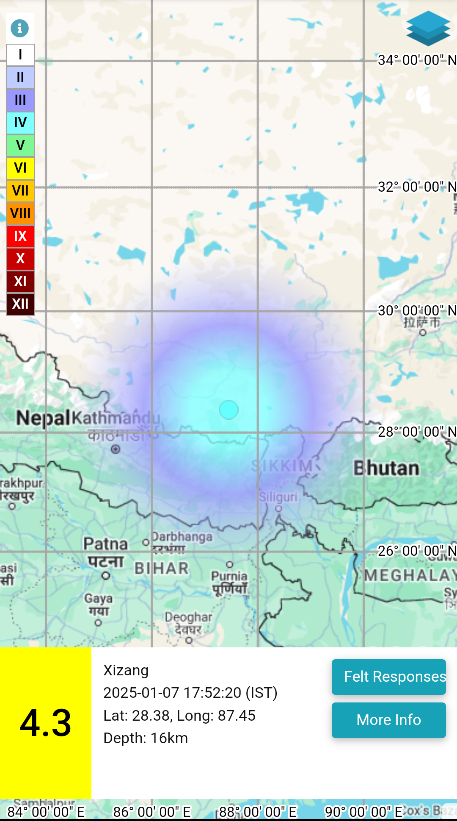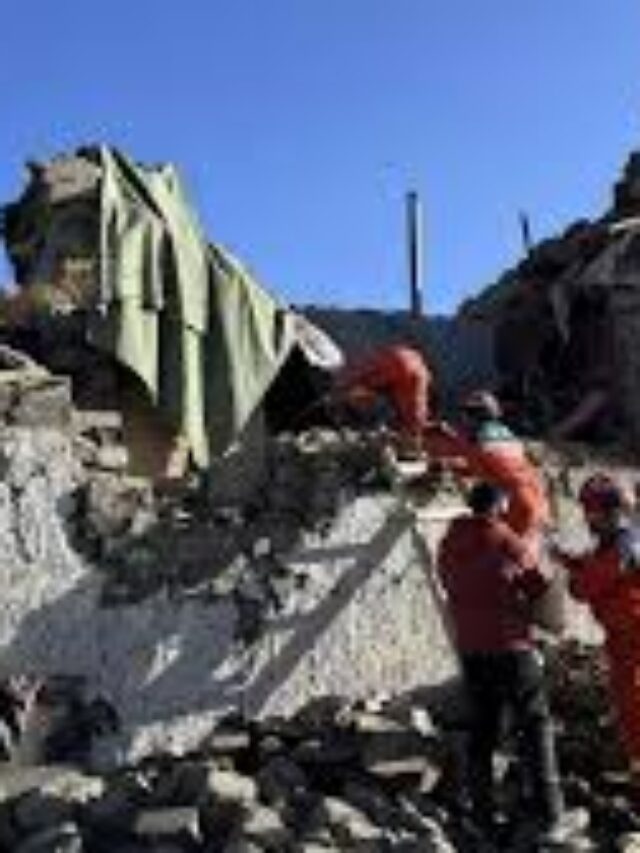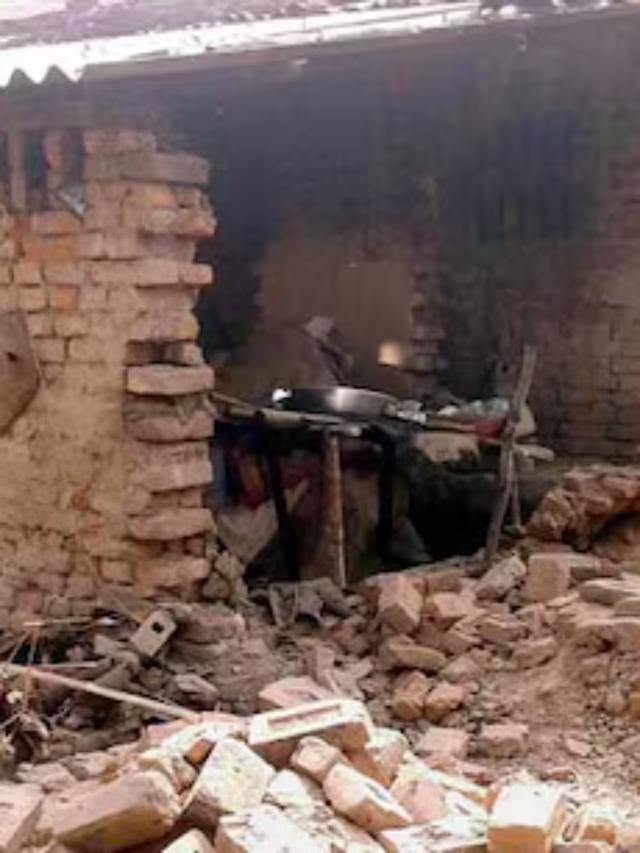
Table of Contents
Another Earthquake Strikes Tibet
Impact of Earthquakes on Communities and Preparedness Measures
Earthquakes are one of the most unpredictable and devastating natural disasters, often leaving behind a trail of destruction that impacts lives, infrastructure, and economies. In recent times, the recurrence of earthquakes in regions like Tibet highlights the importance of understanding their effects and implementing measures to mitigate the risks. This blog delves into the profound impact earthquakes have on communities and explores strategies to enhance preparedness and resilience. Another Earthquake Strikes Tibet
Understanding Earthquakes
An earthquake occurs when the Earth’s tectonic plates shift, causing the ground to shake. This phenomenon is a result of accumulated stress in the Earth’s crust, which is suddenly released. Earthquakes are measured on the Richter scale or the moment magnitude scale (Mw), which quantify the energy released. While minor tremors may cause little to no damage, earthquakes with magnitudes of 6.0 and above can wreak havoc, especially in densely populated areas. Another Earthquake Strikes Tibet
Regions like the Himalayan belt, which includes Tibet, are particularly susceptible due to the collision of the Indian and Eurasian tectonic plates. This seismic activity is a constant reminder of the geological forces at work beneath our feet.
Economic Repercussions
The cost of rebuilding after a major earthquake can run into billions of dollars. Governments and communities face the dual burden of immediate disaster relief and long-term reconstruction. Economic activities come to a halt, and tourism—an essential revenue source for regions like Tibet—is adversely affected. Insurance claims surge, and resources are diverted from developmental projects to disaster management.
Environmental Impact
Earthquakes can trigger secondary disasters such as landslides, avalanches, and tsunamis. These events not only cause additional destruction but also alter the natural landscape. Rivers may be blocked, creating artificial dams that pose flooding risks, while ecosystems can be disrupted, affecting biodiversity. Another Earthquake Strikes Tibet
Lessons from Recent Earthquakes
The recurrence of earthquakes in vulnerable regions underscores the importance of preparedness and resilience. The Tibet earthquake highlights the challenges faced by remote and mountainous areas where accessibility and communication are often limited. Rescue operations are hampered, delaying the delivery of aid and medical assistance.
The lessons learned from such events emphasize the need for better planning, community engagement, and technological advancements to minimize the impact of future earthquakes.
Enhancing Preparedness and Resilience
1. Strengthening Infrastructure
One of the most effective ways to reduce earthquake damage is by constructing earthquake-resistant buildings. Modern engineering techniques, such as base isolators and shock absorbers, can significantly enhance a structure’s ability to withstand seismic activity. Retrofitting older buildings to meet safety standards is equally important, especially for schools, hospitals, and government offices.
2. Community Awareness and Education
Educating communities about earthquake preparedness is crucial. Awareness campaigns can teach individuals how to respond during an earthquake—such as taking cover under sturdy furniture and staying away from windows and heavy objects. Regular drills in schools, offices, and public spaces ensure that people are better equipped to handle emergencies. Another Earthquake Strikes Tibet
3. Early Warning Systems
Advances in technology have made it possible to detect seismic activity and issue early warnings. These systems, while not preventing earthquakes, provide crucial seconds or minutes for people to evacuate buildings and for authorities to halt critical operations, such as trains and industrial processes.
Countries like Japan have invested heavily in earthquake early warning systems, setting an example for others to follow. For regions like Tibet, implementing such systems can save countless lives in the future.
4. Emergency Response Planning
Effective disaster response requires coordination between government agencies, non-governmental organizations (NGOs), and local communities. Pre-planned emergency protocols, including designated evacuation routes, relief shelters, and medical facilities, can expedite rescue efforts and reduce casualties.
Equipping rescue teams with modern tools and technology, such as drones for aerial surveys and thermal imaging cameras to locate survivors, can enhance the efficiency of relief operations. Another Earthquake Strikes Tibet
5. Policy and Legislation
Governments must enforce strict building codes and land-use regulations in earthquake-prone areas. Policies should also focus on sustainable development, ensuring that urban expansion does not compromise safety standards. Incentives for homeowners and businesses to adopt earthquake-resistant measures can further encourage compliance.
The Role of International Aid
In the aftermath of devastating earthquakes, international aid plays a vital role in providing immediate relief and long-term support. Organizations like the Red Cross, UN agencies, and international NGOs contribute funds, supplies, and expertise to affected regions. Collaborative efforts between nations can also facilitate the exchange of knowledge and technology, helping vulnerable countries build resilience.
The Importance of Long-Term Resilience
While immediate relief is essential, long-term resilience is equally important. This includes rebuilding communities with a focus on sustainability and disaster risk reduction. Investments in research and development can improve our understanding of earthquakes and lead to innovative solutions for mitigating their impact.
Urban planning must consider seismic risks, incorporating green spaces and flexible infrastructure that can adapt to natural disasters. Community participation in reconstruction efforts fosters a sense of ownership and ensures that the unique needs of each region are addressed.
Conclusion
Earthquakes are a reminder of nature’s immense power and humanity’s vulnerability. However, with proactive measures, it is possible to minimize their impact and protect lives and livelihoods. From strengthening infrastructure and enhancing community awareness to implementing early warning systems and enforcing policies, a multi-faceted approach is essential.
The recent earthquake in Tibet underscores the urgency of these efforts. As global citizens, we must support initiatives that promote resilience and preparedness, ensuring that communities can recover and thrive even in the face of adversity. By learning from past experiences and embracing innovation, we can build a safer and more sustainable future for all.
Do follow Indian News
Latest Posts
- “बसंत पंचमी: माँ सरस्वती की आराधना और ज्ञान का पर्व” | “माँ सरस्वती: ज्ञान, संगीत और विद्या की देवी” | Basant Panchami 2025: Celebrating Knowledge, Wisdom, and New Beginnings
- American Airlines Jet Collide Near Reagan Airport | Shocking Collision: American Airlines Jet and Army Black Hawk Helicopter Crash Near Reagan Airport – 5 Key Facts
- होलीका दहन कथा प्रहलाद होलिका | प्रहलाद और होलिका की पौराणिक कथा | Holika Dahan Story | The Mythological Tale of Prahlad and Holika you must know in 2025
- Sri Lanka vs Australia 1st Test : Sri Lanka vs Australia 1st Test: Thrilling Day 1 Action and Live Score Updates
- Judge Blocks Trump Aid Freeze | Judge Temporarily Halts Trump Administration’s Federal Aid Freeze Plan
Latest Comments
If the whole world is against you, I am with the world ✌🏻
nice
Wow what great news for india









I have fun with, cause I discovered just what I used to be having a look for. You have ended…